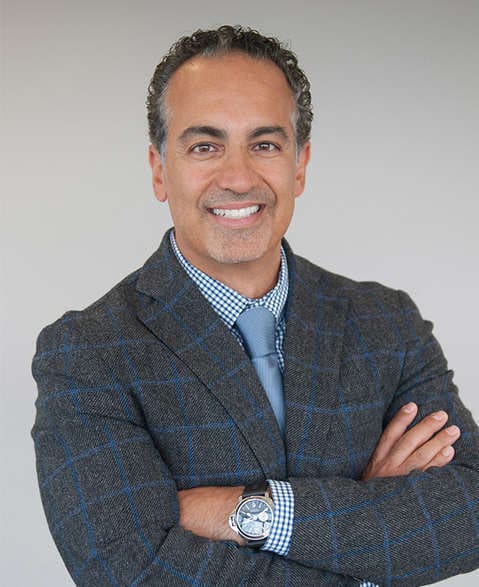
Medically Reviewed by Jonathan Pirnazar, M.D.
20-30 Year Olds: Is It Normal That My Vision Is Getting Worse?
Home / Vision Education Center /
Last Updated:

Medically Reviewed by Jonathan Pirnazar, M.D.
Young adults in their 20s and 30s typically have healthy eyes and decent vision. Most age-related eye issues, such as presbyopia (farsightedness that occurs with aging) begin around age 40.
Table of Contents
If you are between 19 and 40 years old, you likely have relatively good vision that is fairly close to 20/20. This could be either with or without a need for corrective eyewear, such as contacts or glasses.
The American Optometric Association (AOA) publishes that most eye-related issues in young adults (under the age of 40) are due to eye injuries or visual stress.
As you age, your eyes will begin to change and your vision can get worse. This is completely normal. There are steps you can take to keep your eyes healthy and maintain your eyesight for as long as possible.
Be sure to talk to your optometrist about how to take care of your eyes and receive regular eye exams.
Why Does Eyesight Get Worse Over Time?
As the years go by, you might wonder why eyesight gets worse over time. While age-related factors like presbyopia are often cited, several additional reasons contribute to the decline in eyesight. First, the natural aging process affects the lens of the eye, making it less flexible and impeding its ability to focus. Secondly, lifestyle choices such as extended screen time can lead to issues like digital eye strain.
Health conditions like diabetes or high blood pressure can further accelerate vision decline, contributing to eye diseases that impair vision. Environmental factors, including exposure to ultraviolet light and nutritional deficits, also play a role.
Therefore, it’s not just the aging process but a blend of lifestyle, health, and environmental factors that influence how our eyesight changes over time. Regular eye care and lifestyle adjustments can help mitigate some of these effects.
Age-Related Eye Changes at 20–30
As you age, your eyes can change. If you need corrective lens for astigmatism (irregularly shaped corneas), hyperopia (farsightedness), or myopia (nearsightedness), your prescription can change, and you may need a stronger lens to clear your vision. It is completely normal for prescription needs to change with age.
The lens of your eye also hardens with age, which can lead to age-related farsightedness, called presbyopia. As the lens becomes more rigid, focusing on the retina directly is more difficult. This leads to blurred vision and trouble seeing things clearly close up. Muscles that support the lens also relax with age, contributing to visual errors.
Presbyopia is a condition that typically occurs around age 40 or later, but you can develop the condition any time after age 35, the National Eye Institute (NEI) publishes. With presbyopia, even if you had 20/20 vision before, you may now need readers to see things like menus, read small text, or see things clearly up close.
Usually when you are in your 20s and 30s, your eyes are fairly healthy, and you likely have 20/20 vision, either with or without corrective contact lenses or eyeglasses. Age-related changes in the eyes often begin in your late 30s to early 40s.
Conditions That Can Arise at This Age

Eye strain can be the result of looking at screens and long-term exposure to blue light, such as that emitted by computers, smartphones, and television sets. Often, young adults spend a lot of time looking at screens, and this can contribute to tired, irritated, and strained eyes.
Digital eye strain, or computer vision syndrome (CVS), can happen from prolonged screen time. Most American adults spend around seven hours every day looking at a computer screen. This can cause CVS, which can include the following symptoms:
- Blurred vision
- Dry eyes
- Eye strain
- Headaches
- Neck and shoulder tension
Eye strain from spending so much time looking at a screen can be minimized by following the 20-20-20 rule. Every 20 minutes, look at least 20 feet away for about 20 seconds at a time. This can help to reduce symptoms of computer vision syndrome, as it allows your eyes time to relax and re-center.
Eye fatigue and strain are common in your 20s and 30s, as you likely spend a lot of time at the computer, on your smartphone, and watching tv. Exposure to blue light from these devices can be harmful to the eyes over time.
Try and rest your eyes when they get dry, strained, and irritated. Take frequent breaks from your screen. Reducing your exposure to blue light and screens for at least an hour or two before bed can help you to get more restful sleep as well.
Living With Worsening Vision
It can be tough to cope with worsening vision, particularly when it seems to happen earlier than expected. If your vision is worsening in your 20s, you might be struggling to adjust to that reality.
Even with decreased vision, you can still live an active life. Some modifications can help you adapt to worsening vision.
- Improve lighting. Make sure you perform tasks in areas with adequate lighting. As your vision declines, it will become more difficult to see in poorly lit areas.
- Use magnifying tools. Low-vision devices, such as magnifying glasses, can help you to quickly see up-close things, such as reading materials, better.
- Consider lens shields. These can help to reduce glare, helping you to see better.
- Enlarge your font size. Increase the font size on your phone, computer, and other screens to make it easier to read.
- See your doctor regularly. Regardless of the cause of your vision loss, it’s important to stay on top of your eye health by seeing your eye doctor regularly. They can detect any new issues that arise and manage any existing ones.
- Ask for help. Worsening vision can take a mental toll on anyone, and it can be particularly acute for younger individuals. Seek out peer support groups, or talk to friends or family members about what you’re feeling.
Maintaining Healthy Eyes
The best thing you can do for your eyes to protect them as you age is to make good lifestyle choices, such as not smoking and eating a healthy and balanced diet. Consume foods that are rich in antioxidants, and eat multiple servings of vegetables and fruits every day.
Get regular eye exams. Talk to your eye doctor about any medications, vitamins, and supplements you take. Discuss any vision changes that may have arisen since the last visit.
Between the ages of 19 and 30, AOA recommends regular eye exams and visits to the optometrist at least every two years. More frequent visits are recommended if you have a family or personal history of eye-related issues. Problems like diabetes, high blood pressure, or a family history of vision problems and eye diseases can mean that you may need to see an eye doctor more often.
If you start to experience vision issues, schedule an exam with your eye doctor as soon as possible.
There are additional measures you can take to maintain your eye health and promote optimal vision.
- Wear sunglasses and protect your eyes from the sun and ultraviolet (UV) light. UV rays can damage the eyes with prolonged exposure. Sunglasses that have UVA and UVB protection, as well as visors or hats, can help to protect your eyes.
- Exercise frequently. Healthy habits like regular exercise can increase oxygen levels in the eyes and enhance blood flow and circulation throughout the body. This can also help to purge toxins and keep the eyes healthy.
- Practice good hygiene. Wash your hands and be careful to avoid eye irritants, such as cosmetics or hair spray, near the eyes. This can help to keep the eyes and face clean and therefore reduce the risk for eye infections.
- Maintain your corrective eyewear prescriptions. If you wear glasses or contacts for vision correction, be sure to wear them as directed. Not wearing your prescription eyewear can cause eye strain and potentially lead to further vision problems. Maintain your prescriptions, and follow all recommendations and directions on wearing, cleaning, and taking care of your contacts or glasses.
- Limit screen time as much as you can, and give your eyes frequent breaks from LED devices and blue light. There are special glasses that may decrease exposure to blue light, and many smartphones have settings now that allow you to limit blue light exposure as well.
Taking care of your eyes often starts with regular health and lifestyle choices. Maintaining physical and emotional health can also help with vision and eyesight.
Talk to your optometrist about how to maintain your personal eye health. They can offer tips to improve and enhance your vision as you age.
You deserve clear vision. We can help.
With 135+ locations and over 2.5 million procedures performed, our board-certified eye surgeons deliver results you can trust. Your journey to better vision starts here.
References
- Adult Vision: 19 to 40 Years of Age. (2019). American Optometric Association (AOA).
- Facts About Presbyopia. (October 2010). National Eye Institute (NEI).
- Computer Vision Syndrome. (2019). American Optometric Association (AOA).
- Blue Light Has a Dark Side. (August 2018). Harvard Health.
- The Impact of Vision Loss. (2016). Making Eye Health a Population Health Imperative: Vision for Tomorrow. The National Academies of Sciences, Engineering, and Medicine.
- 14 Steps to a Lifetime of Healthy Vision. (April 2021). American Academy of Ophthalmology.

Dr. Pirnazar is known as the one of the best LASIK surgeons in Orange County, California. Having performed over 55,000 refractive and cataract surgeries, Dr. Pirnazar’s specialties include LASIK, PRK and cataract surgery. Thanks to his expertise, Dr. Pirnazar and his partners at NVISION were selected to be the official team ophthalmologists for the Los Angeles Chargers.
This content is for informational purposes only. It may have been reviewed by a licensed physician, but is not intended to serve as a substitute for professional medical advice. Always consult your healthcare provider with any health concerns. For more, read our Privacy Policy and Editorial Policy.